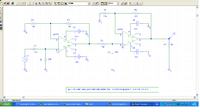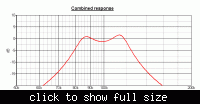Md. Sarwar Jahan Sabuj
Newbie level 4
I want to create an optimized band-pass filter using two op-amp uA741. My required band is 85-115KHz with carrier frequency 100kHz. This design will be a part of Frequency division demultiplexer. It's very necessary to optimize the design for recovering an original message signal. In schematic (using orcad pspice 9.2) i have found better result but i think this is not optimzed. Pls help me in this regard. My band pass design has been shown in picture. N.B. i want only to pass the required band.




